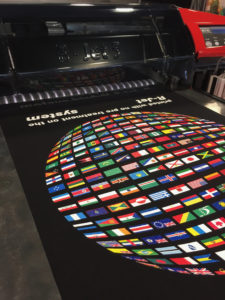
Resolute DTG’s managing director, Colin Marsh, offers tips on which level of direct to garment printing is right for you and also discusses the prospect of T shirts that do not need to be pre-treated.
If you’re dipping your toes into DTG or going the whole hog, what do you do?
Starting the DTG process in 2016 rather than 10 years ago means you have a lot more choice. With entry level DTG printers now starting at a very low price and a whole range of consumables to choose from it can make the right choice a little difficult.
DTG is now clearly split into three categories – entry level, middle market and high volume. How can you tell which category you should be looking at for your DTG system? Don’t despair, working out your needs is not quite as bad as you might think.
- How many items a day do you want to print?
- What kind of garments will you print?
- Variable data or long run.
- Online or business to business.
How many items per day
When you look at DTG, either adding the process to an existing business or starting from scratch one of the most important questions you need to ask yourself is ‘what do I need DTG to do for me’. First work out your expected volumes, if you are going to be printing more than 20 shirts in a day you are probably not looking for an entry level system, or you may need multiple printers to cope with higher volumes. Above 20 and below 200 a day and you are looking at middle market systems. This is the most populated area of DTG printers and there are many to choose from at similar prices. Anything above a few hundred a day and you could be looking at multiple units or an industrial system like a Kornit or an Aeoon. These come at a higher price but are designed to cope with very high volumes.
What kind of garments will you print?
Size does matter in the DTG arena, printing normal T shirts only requires an image area a little over A3 to look good. If you are looking to print fabric items like a fat quarter or a pillow case edge to edge you need to set your sights quite high. Most DTG printers are based around a 17in print bar giving a good sized print area on a garment, if you need to print bigger then you are probably looking at a high end system that can print outside the normal parameters. These are normally based on a large flat bed with a Z axis moving carriage.
Variable data or long run
This is a big one, how do you know what work will come your way two or three years down the line. Unless you have a specific product and that is all you want to print be prepared to print a wide range of items of varying sizes.
Online or business to business
It’s pretty common knowledge that print on-demand via an online system produces high profits when using DTG. Using this method generally brings low volume print runs (not the total shirts per day) and is normally classed as a middle market requirement. Business to business can require long print runs of the same artwork; this generally requires a high volume system.
Obviously every business is different and these points are a generalisation based on historic knowledge.
How pre-treating garments is about to change
The holy grail of DTG is the ability to print a dark garment without the need to pre-treat it. Well that day is finally here and about to hit the shelves in early 2017.
Producing fabric for DTG that requires no pre-treatment has been worked on for many years. One of the largest steps in DTG printing, T shirts that can be printed anywhere, including the sleeves front and back without the need to pre-treat will be covered in depth in next month’s DTG column.
 Printwear & Promotion The Total Promotional Package
Printwear & Promotion The Total Promotional Package




